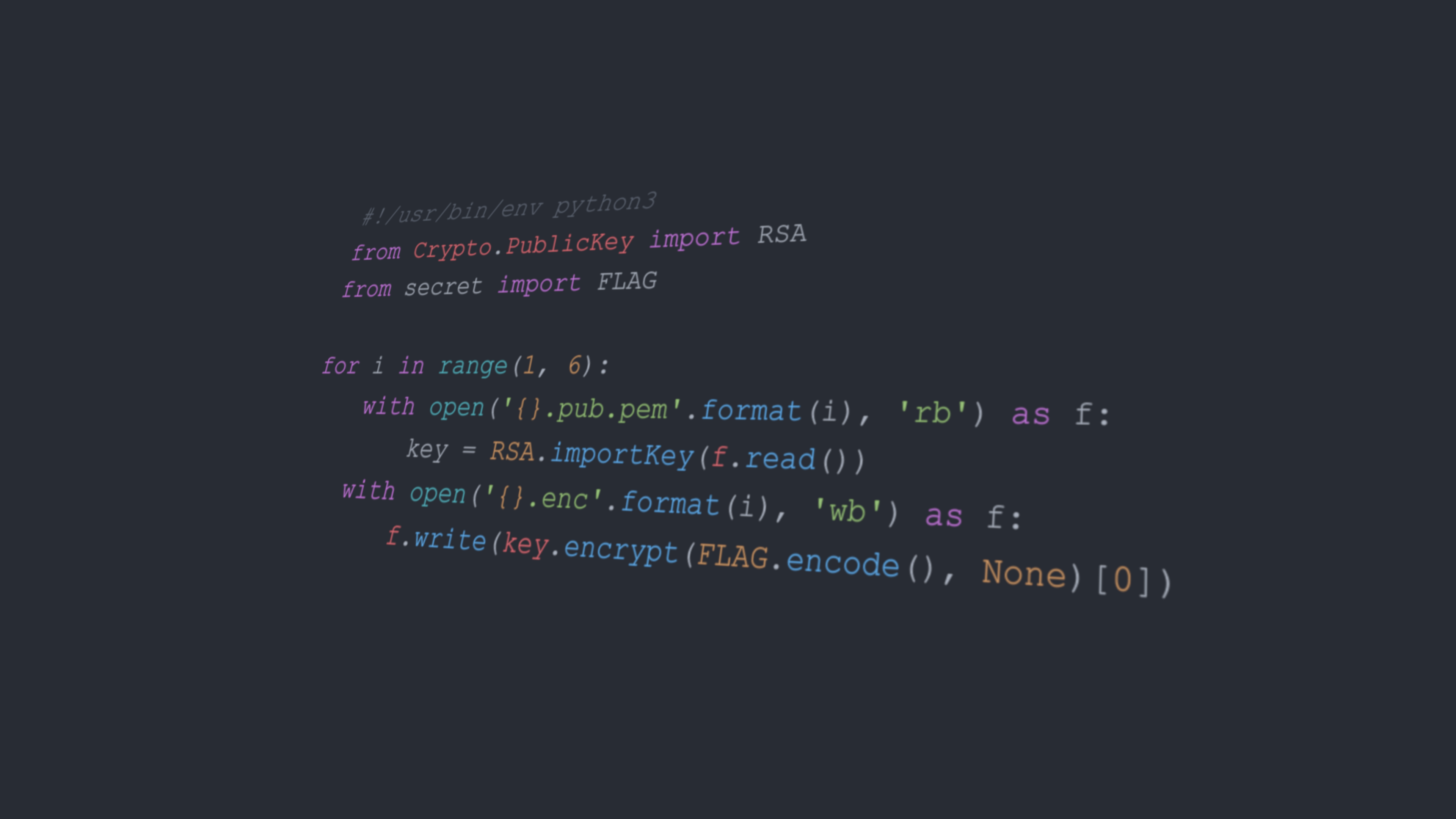第二场感觉好多了,没那么唐了,三个签到题出的没那么快但是都是一发过,在三题队中排名非常靠前;后期想出了一个有点复杂的 $I$ ,做出四个题,排名还不错。这次智力还可以。
A
题意:给定两个大小为 $1\times 1$ 的瓷砖花纹 $A,B$,现在要排一个 $n\times m$ 的瓷砖矩阵,使连续的条纹数量为 $K$ 。
一个找规律题,并不是很难,但似乎榜歪了,都没怎么考虑这个题。
将整个图案分成很多个 $2\times 2$ 的小区域,当每个区域排列都为 $ABBA$ 时会构成很多个圆,这样子的条纹数是最多的,而且每换掉一块瓷砖,花纹数量减少1。简单模拟即可,注意一下处理特殊情况,比如有些边界的瓷砖调换后不会影响数量。
1 2 3 4 5 6 7 8 9 10 11 12 13 14 15 16 17 18 19 20 21 22 23 24 25 26 27 28 29 30 31 32 33 34 35 36 37 38 39 40 41 42 43 44 45 46 47 48 49 50 51 52 53 54 55 56 57 58 59 60 61 62 63 64 65 66 67 68 69 70 71 72 73 74 75 76 77 78 79 80 81 82 83 84 85 86 87 88 89 90 91 92 93 94 95 96 97 98 99 100 101 102 103 104 105 106 #include <bits/stdc++.h> using namespace std;#define LL long long #define fuck puts("fuck" ); #define fi first #define se second template <typename T>inline void rd (T &x) T c=getchar (),tx=1 ;x=0 ; while (c<'0' ||c>'9' ) tx=c=='-' ?-1 :tx,c=getchar (); while (c>='0' &&c<='9' ) x=(x<<1 )+(x<<3 )+(c^48 ),c=getchar (); x*=tx; } int n,m,k,x,y,p;int mx,tot; char s;void solve () int x,y; rd (n),rd (m),rd (k); rd (x),rd (y);cin>>s; p=(s=='A' )^((x+y)&1 ); if (p) mx=n+m+(((n-1 )*(m-1 )+1 )/2 ); else mx=n+m+(n-1 )*(m-1 )/2 ; if (k<n+m||k>mx) { puts ("No" ); return ; } puts ("Yes" ); tot=mx-k; if (p&&s=='A' ){ for (int i=1 ;i<=n;++i){ if (i&1 ) printf ("A" ); else printf ("B" ); for (int j=2 ;j<=m;++j){ if ((i+j)&1 ){ if (!tot) printf ("B" ); else { --tot; printf ("A" ); } } else printf ("A" ); } puts ("" ); } } else if (p&&s=='B' ){ for (int i=1 ;i<=n;++i){ for (int j=1 ;j<m;++j){ if (!((i+j)&1 )){ if (!tot) printf ("A" ); else { --tot; printf ("B" ); } } else printf ("B" ); } if ((i+m)&1 ) printf ("B" ); else printf ("A" ); puts ("" ); } } else if (!p&&s=='A' ){ for (int i=1 ;i<=n;++i){ if (i&1 ) printf ("B" ); else printf ("A" ); for (int j=2 ;j<=m;++j){ if (!((i+j)&1 )){ if (!tot) printf ("B" ); else { --tot; printf ("A" ); } } else printf ("A" ); } puts ("" ); } } else { for (int i=1 ;i<=n;++i){ for (int j=1 ;j<m;++j){ if (((i+j)&1 )){ if (!tot) printf ("A" ); else { --tot; printf ("B" ); } } else printf ("B" ); } if ((i+m)&1 ) printf ("A" ); else printf ("B" ); puts ("" ); } } } signed main () int T; rd (T); while (T--){ solve (); } }
B
题意:给一个含有 $N$ 个点 $M$ 条边的图,有 $q$ 个询问,每次询问给定的点集 $S$ 构成的最小生成树。$q\leq 10^5,|S|\leq 10^5$
好玄学啊这题。
前置知识:根号分治。
注意到 $|S|\leq 10^5$ ,为一个定值,可以用根号分治。确定阈值 $K$ ,当 $|S|<K$ 时暴力枚举每个点对是否有边,再跑Kruskal ;若 $|S|\geq K$ ,$O(m)$ 遍历所有边,找出含在集合里的边再跑Kruskal。当 $K=\sqrt{N}$ 时能把时间复杂度降到 $O(N^{1.5})$ 级别。
1 2 3 4 5 6 7 8 9 10 11 12 13 14 15 16 17 18 19 20 21 22 23 24 25 26 27 28 29 30 31 32 33 34 35 36 37 38 39 40 41 42 43 44 45 46 47 48 49 50 51 52 53 54 55 56 57 58 59 60 61 62 63 64 65 66 67 68 69 70 71 72 73 74 75 76 77 78 79 80 81 82 83 84 85 86 87 88 89 90 91 92 93 94 95 96 97 98 99 100 101 102 103 104 105 106 107 108 109 110 111 112 113 114 #include <bits/stdc++.h> using namespace std;#define LL long long const int N=1e5 +5 ;struct bian { int u,v,w; }adj[N]; int fa[N];int check[N];int n,m,q;unordered_map<LL,int > mp; int getfa (int x) return fa[x] = fa[x]==x?x:getfa (fa[x]); } bool cmp (bian x,bian y) return x.w<y.w; } void solve () int cnt; int dian[N]; scanf ("%d" ,&cnt); for (int i=1 ;i<=cnt;i++) { scanf ("%d" ,&dian[i]); check[dian[i]]=1 ; fa[dian[i]]=dian[i]; } bian tmp[N]; int tot=0 ; if (1LL *cnt<1LL *n/cnt) { for (int i=1 ;i<=cnt;i++) { for (int j=i+1 ;j<=cnt;j++) { LL hash1=1LL *dian[i]*N+dian[j]; int w=mp[hash1]; if (w!=0 ) { ++tot; tmp[tot].u=dian[i]; tmp[tot].v=dian[j]; tmp[tot].w=w; } } } sort (tmp+1 ,tmp+tot+1 ,cmp); } else { for (int i=1 ;i<=m;i++) { int u=adj[i].u; int v=adj[i].v; if (check[u] && check[v]) { tmp[++tot]=adj[i]; } } } int sum=0 ; LL ans=0 ; for (int i=1 ;i<=tot;i++) { int u=tmp[i].u; int v=tmp[i].v; int fu=getfa (u); int fv=getfa (v); if (fu==fv)continue ; sum++; ans+=1LL *tmp[i].w; fa[fv]=fu; } if (sum!=cnt-1 )puts ("-1" ); else printf ("%lld\n" ,ans); for (int i=1 ;i<=cnt;i++)check[dian[i]]=0 ; } int main () scanf ("%d%d%d" ,&n,&m,&q); for (int i=1 ;i<=m;i++) { cin>>adj[i].u>>adj[i].v>>adj[i].w; LL hash1=1LL *adj[i].u*N+adj[i].v; LL hash2=1LL *adj[i].v*N+adj[i].u; mp[hash1]=mp[hash2]=adj[i].w; } sort (adj+1 ,adj+m+1 ,cmp); for (int i=1 ;i<=q;i++)solve (); }
C
题意:有一个 $2\times n$ 的包含红白格子的网格图。从红格子开始走,只能走红格子,且不能走回头路,求能走过的最大红格子数。
$$
$$
然后再扫一遍判断一列都是红的情况,这是一个红格子可以由同一列的格子转移来。
1 2 3 4 5 6 7 8 9 10 11 12 13 14 15 16 17 18 19 20 21 22 23 24 25 26 27 28 29 30 31 32 33 34 35 36 37 38 39 40 41 42 43 #include <bits/stdc++.h> using namespace std;#define LL long long #define fuck puts("fuck" ); #define fi first #define se second template <typename T>inline void rd (T &x) T c=getchar (),tx=1 ;x=0 ; while (c<'0' ||c>'9' ) tx=c=='-' ?-1 :tx,c=getchar (); while (c>='0' &&c<='9' ) x=(x<<1 )+(x<<3 )+(c^48 ),c=getchar (); x*=tx; } const int N=1e6 +10 ;int n;int f[N][3 ],ans;char s[3 ][N];void solve () rd (n); for (int i=1 ;i<=2 ;++i) scanf ("%s" ,s[i]+1 ); for (int i=1 ;i<=n;++i){ if (s[1 ][i]=='R' ){ if (s[1 ][i-1 ]=='R' ){ f[i][1 ]=f[i-1 ][1 ]+1 ; if (s[2 ][i-1 ]=='R' ) f[i][1 ]=max (f[i][1 ],f[i-1 ][2 ]+2 ); } } if (s[2 ][i]=='R' ){ if (s[2 ][i-1 ]=='R' ){ f[i][2 ]=f[i-1 ][2 ]+1 ; if (s[1 ][i-1 ]=='R' ) f[i][2 ]=max (f[i][2 ],f[i-1 ][1 ]+2 ); } } } for (int i=1 ;i<=n;++i){ ans=max (ans,max (f[i][1 ],f[i][2 ])); if (s[1 ][i]=='R' &&s[2 ][i]=='R' ) ans=max (ans,max (f[i][1 ],f[i][2 ])+1 ); } printf ("%d" ,ans); } signed main () solve (); }
E
题意:给定 $x$ ,求比 $x$ 小的 $y$ 使得 $x\oplus y=gcd(x,y)$ 。
答案即 $x-lowbit(x)$ 。
1 2 3 4 5 6 7 8 9 10 11 12 13 14 15 16 17 18 19 20 21 22 # include <bits/stdc++.h> using namespace std;typedef long long LL;LL lowbit (LL x) return x & -x; } int main () int t; cin >> t; while (t --) { long long x; cin >> x; if (x == lowbit (x)) cout << -1 << endl; else cout << x - lowbit (x) << endl; } return 0 ; }
G
题意:给一个 $multiset$ ,有多少个子集满足元素之积是完全平方数,求这些完全平方数的和。$1\leq a_i\leq 1000$
注意到每一个数都小于1000,于是每个数最多含有1个大于31的质因数。那么考虑将质因数分类,分为小于等于31的小质数和大于31的大质数,把小质数状压为 $S$ ,每一位表示这一位的质数的指数是奇数还是偶数。设计 $dp[i][S]$ 表示前 $i$ 个数涉及的质因数状态为 $S$ 时的答案。有转移方程:
另外,对于大质数的情况,我们只需要在最初的11位状态中多加1位表示大质数,且每到一个新数就清空一次最高位,因为大于31的质数每个数只能出现一次。
1 2 3 4 5 6 7 8 9 10 11 12 13 14 15 16 17 18 19 20 21 22 23 24 25 26 27 28 29 30 31 32 33 34 35 36 37 38 39 40 41 42 43 44 45 46 47 48 49 50 51 52 53 54 55 56 57 58 59 60 61 62 63 64 65 66 67 68 69 70 71 72 73 74 75 76 77 78 79 80 81 82 83 84 85 86 87 88 89 90 91 92 93 94 95 96 97 98 99 100 101 102 103 104 105 106 107 108 109 110 111 112 113 114 115 116 117 118 119 120 121 122 123 124 125 # include <bits/stdc++.h> using namespace std;typedef long long LL;const int N = 1010 , M = 12 , mod = 1e9 + 7 ;int f[N][1 << M];bool st[N];int a[N], id[N];int n, cnt;int primes[N];vector<int >prime[1000 ]; int qp (int a, int b) int res = 1 ; while (b) { if (b & 1 ) res = res * a; a = a * a; b >>= 1 ; } return res; } void init () for (int i = 2 ; i < N; i++) { if (!st[i]) primes[cnt++] = i, id[i] = cnt - 1 ; for (int j = 0 ; primes[j] < N / i; j ++) { st[primes[j] * i] = true ; if (i % primes[j] == 0 ) break ; } } } int main () scanf ("%d" , &n); for (int i = 1 ; i <= n; i ++) scanf ("%d" , &a[i]); init (); for (int i = 1 ; i <= n; i ++) { int m = a[i]; if (m == 1 ) { prime[2 ].push_back (1 ); continue ; } int max_prime = 0 ; for (int j = 2 ; j <= m / j; j ++) { if (m % j ==0 ) { max_prime = max (max_prime, j); int s = 0 ; while (m % j == 0 ) { m /= j; s ++; } } } if (m > 1 ) max_prime = max (max_prime, m); prime[max_prime].push_back (a[i]); } int ct = 0 ; f[0 ][0 ] = 1 ; for (int i = 0 ; i < cnt; i ++) { int P = primes[i]; for (int t = 0 ; t < prime[P].size (); t ++) { if (!t) for (int state = 1 << M - 1 ; state < 1 << M; state ++) f[ct][state] = 0 ; for (int state = 0 ; state < 1 << M; state ++) f[ct + 1 ][state] = f[ct][state]; for (int state = 0 ; state < 1 << M; state ++) { int c = prime[P][t]; int n_state = 0 ; int mul = 1 ; for (int j = 2 ; j <= c / j; j ++) { if (c % j ==0 ) { int s = 0 ; while (c % j == 0 ) { c /= j; s ++; } if (s % 2 == 0 ) mul = (LL)mul * qp (j, s / 2 ) % mod; else n_state |= (1 << id[j]), mul = (LL)mul * qp (j, s / 2 ) % mod; } } if (c > 1 ) n_state |= (1 << min (11 , id[c])); for (int k = 0 ; k < M; k ++) if ((state >> k & 1 ) && (n_state >> k & 1 )) if (k < M - 1 ) mul = (LL)mul * primes[k] % mod; else mul = (LL)mul * primes[i] % mod; int target = state ^ n_state; f[ct + 1 ][target] = ((LL)f[ct + 1 ][target] + (LL)f[ct][state] * mul % mod) % mod; } ct ++; } } printf ("%d\n" , (f[n][0 ] - 1 + mod) % mod); return 0 ; }
H
题意:给定一段包含 $ASDW$ 的指令序列,从 $(0,0)$ 出发,要求经过 $(x,y)$ ,求这样的连续指令段的数量。
首先记录前缀和,当确定某个段的终点后,起点的前缀和的值就可以确定。
1 2 3 4 5 6 7 8 9 10 11 12 13 14 15 16 17 18 19 20 21 22 23 24 25 26 27 28 29 30 31 32 33 34 35 36 37 38 39 40 41 42 43 #include <bits/stdc++.h> using namespace std;#define LL long long #define fuck puts("fuck" ); #define fi first #define se second template <typename T>inline void rd (T &x) T c=getchar (),tx=1 ;x=0 ; while (c<'0' ||c>'9' ) tx=c=='-' ?-1 :tx,c=getchar (); while (c>='0' &&c<='9' ) x=(x<<1 )+(x<<3 )+(c^48 ),c=getchar (); x*=tx; } const int N=2e5 +10 ;int n;int x,y,vx,vy;int dx[128 ],dy[128 ];LL ans; char s[N];map<pair<int ,int >, int >mmp; void solve () dx['W' ]=0 ,dx['A' ]=-1 ,dx['S' ]=0 ,dx['D' ]=1 ; dy['W' ]=1 ,dy['A' ]=0 ,dy['S' ]=-1 ,dy['D' ]=0 ; rd (n),rd (vx),rd (vy); scanf ("%s" ,s+1 ); if (vx==0 &&vy==0 ){ printf ("%lld" ,n*(n+1 )/2 ); return ; } mmp[{0 ,0 }]=1 ; for (int i=1 ;i<=n;++i){ x+=dx[s[i]]; y+=dy[s[i]]; ans+=1ll *mmp[{x-vx,y-vy}]*(n-i+1 ); mmp[{x-vx,y-vy}]=0 ; mmp[{x,y}]++; } printf ("%lld" ,ans); } signed main () solve (); }
I
题意:给 $2\times n$ 个数的排列, $1-n$ 每个数出现2次,每次能拿走连续一段数,但首尾的数必须相同,此次操作得到的分数为第一个数与这一段数的长度的乘积。求最大分数。$n\leq3000$
首先将所有区间排序,从小区间处理大区间的分数。有一个小技巧是最开始和末尾添加两个0,那么最后的答案就是 $d[0]$ 。
对于一个区间 $[l,r]$,要把它拿走最少的分数就是 $a[l]\times (r-l+1)$ ,但是如果其中有包含的区间 $[l’,r’]$ 且 $a[l’]>a[l]$ ,那么先拿走中间小区间会更优。此时有可能就会出现冲突,如:$l,…,l_1,…l_2,…,r_1,…,r_2,…,r$ ,选择中间哪个区间就转化为了区间覆盖问题:在一个区间内选择若干个不重合的区间,那个区间有一个价值,使总价值最大,用 $dp$ 求得。
1 2 3 4 5 6 7 8 9 10 11 12 13 14 15 16 17 18 19 20 21 22 23 24 25 26 27 28 29 30 31 32 33 34 35 36 37 38 39 40 41 42 43 44 45 46 47 48 49 50 51 52 53 54 55 #include <bits/stdc++.h> using namespace std;#define LL long long #define fuck puts("fuck" ); #define fi first #define se second #define int long long template <typename T>inline void rd (T &x) T c=getchar (),tx=1 ;x=0 ; while (c<'0' ||c>'9' ) tx=c=='-' ?-1 :tx,c=getchar (); while (c>='0' &&c<='9' ) x=(x<<1 )+(x<<3 )+(c^48 ),c=getchar (); x*=tx; } const int N=6e3 +10 ;int n,m,q;int a[N],L[N],R[N],mxx[N],f[N];struct node { int l,r; bool operator <(node b){ return r-l<b.r-b.l; } }b[N]; void solve () rd (n); for (int i=1 ;i<=2 *n;++i) rd (a[i]); for (int i=1 ;i<=2 *n;++i){ if (!L[a[i]]) L[a[i]]=b[a[i]].l=i; else R[a[i]]=b[a[i]].r=i; } L[0 ]=0 ,R[0 ]=2 *n+1 ; b[0 ]={0 ,2 *n+1 }; sort (b,b+n+1 ); for (int i=0 ;i<=n;++i){ int x=a[b[i].l]; mxx[L[x]]=2 *x; for (int j=L[x]+1 ;j<R[x];++j){ int y=a[j]; mxx[j]=mxx[j-1 ]+x; if (R[y]==j&&L[y]>L[x]) mxx[j]=max (mxx[j],mxx[L[y]-1 ]+f[y]); } f[x]=mxx[R[x]-1 ]; } printf ("%lld" ,f[0 ]); } signed main () solve (); }






